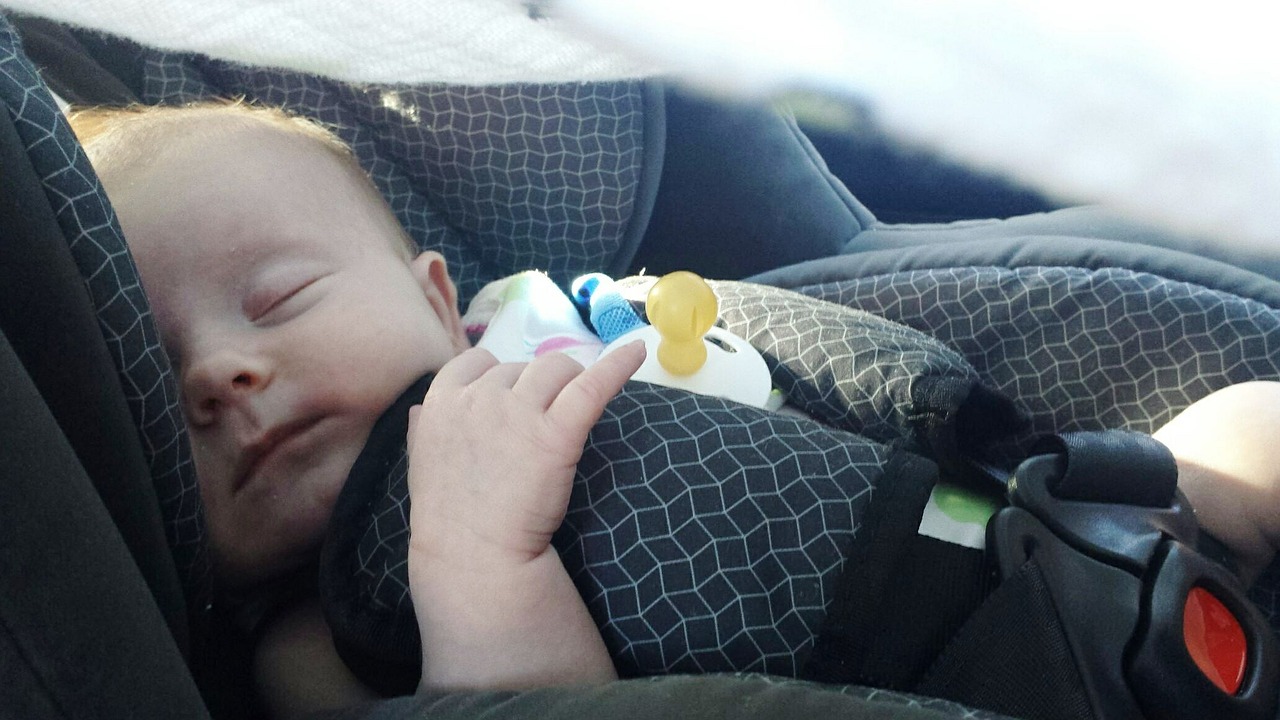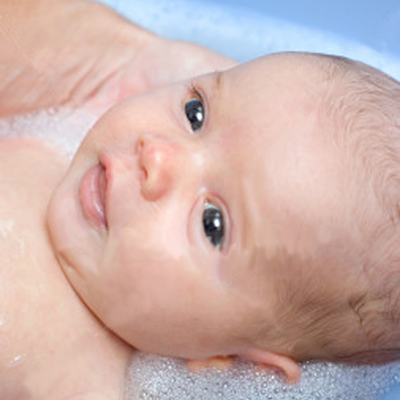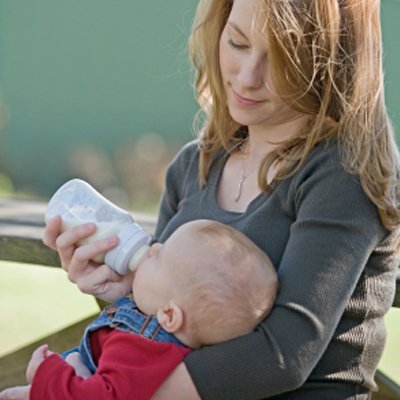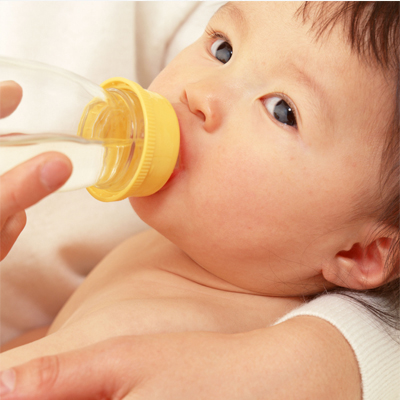Car Seat Safety Check: 8 Common Mistakes You Must Avoid
Take this article and walk out to your driveway now to find out whether your child's car seat is as safe as it should be. You'll be shocked at what you're doing wrong. The scary truth is that four out of five safety seats are used incorrectly, with an average of three mistakes per seat, reports the Washington, D.C.-based National Safe Kids Campaign. And mistakes can be deadly. Consider these chilling statistics: In 2001, nearly 500 children under age 5 were killed in car crashes, and more than 200 of those kids were in car seats designed to save their lives. And as many as 31,700 kids were injured--in car seats. Luckily, there's something you can do to make your child safer: Find out whether you're making any of the mistakes detailed in this article--and fix them today. And make sure to tear out our free car-seat installation guide to keep in your glove compartment for easy reference.
Mistake #1: Seat too loose in the car Test your seat: With both hands, grasp the car seat at the base, near where the vehicle's safety belt passes through the seat. You shouldn't be able to move the safety seat more than one inch to the left or right, or forward. If you can, it's not tight enough. This is the number-one mistake parents make, according to car-seat inspectors. The danger: In a collision, a child in a loose seat could crash into the back of the front seat and seriously injure her face or head. Fast fix: Place your knee in the seat, and put all your weight into it (use your arm for an infant seat), tightening the seat belt as much as possible. Then lock the seat belt--a step that many parents miss. If you have a pre-1996 car, it may not have adequate belt-locking capabilities and you'll need to use a locking clip, says Joseph Colella, Safe Kids' child-passenger-safety training and technical manager. Most safety seats come with one. Don't forget to engage your car's seat belt lock. Shoulder-belt locks work differently than lap-belt locks do, so check your car manual for instructions. The mechanism shown here is standard on many lap belts. Mistake #2: Harness too loose on the child Test your seat: "If, after you've tightened your child into his car seat, you can still pinch the fabric of the harness straps between your fingers, the harness is too loose," says Stephanie Tombrello, executive director of SafetyBeltSafe U.S.A., in Torrance, California. The danger: "A child who's loose in his harness can easily come out of his seat in a crash," Tombrello says. The child could then be severely injured if he hits part of the car's interior or another passenger. The worst-case scenario: the child is ejected from the vehicle altogether. Fast fix: Tighten the harness. Keep in mind that the straps should be snug and have no slack. Mistake #3: Infant turned face-forward too soon Test your seat: All children should remain rear-facing at least until they turn 2-years-old or have reached the maximum height or weight capacity of the car seat, according to the American Academy of Pediatrics. But 30 percent of infants are turned around too soon. "Many people mistake the 'and' in this guideline for an 'or,' " says Michael Sachs, M.D., a Los Angeles pediatrician. "Babies need to fulfill both requirements--weight and age--in order to be forward-facing." In other words, no baby should be turned face-forward before his first birthday. If your baby weighs less than 20 pounds on the day he turns 1, keep him rear-facing until he reaches the recommended weight. The danger: The bones that protect an infant's spinal cord are still forming. When a child is rear-facing, his back--the strongest part of his body--can better absorb the immense forces of a crash. Facing forward, an infant's relatively heavy head can catapult forward, causing his underdeveloped spine to expose his spinal cord and putting him at risk of paralysis or death. Fast fix: Follow the rules. Keep your baby rear-facing until he's at least 2-years-old or has reached the maximum height or weight limit of the seat. Mistake #4: Rear-facing infant seat not at a 45 degree angle Test your seat: Many infant car seats have a built-in level that tells you when your seat is at the wrong angle. More often than not, seats are installed in a position that's too upright. If your seat doesn't have a level, try this: The danger: An infant's airway is very narrow--about the diameter of a soda straw. If your rear-facing seat leans too far forward, your baby's disproportionately heavy head could fall forward, cutting off her airway so she can't breathe. Fast fix: While most rear vehicle seats are sloped toward the back of the car for the comfort of adult passengers, safety seats are designed to be installed on a flat surface. However, many safety seats are equipped with an adjustable pedestal to overcome this. If yours doesn't have one, do what technicians do at car-seat checks: "We place sections of a cut-up swimming-pool noodle under the area where the baby's feet rest," says San Diego police officer Mark McCullough, a certified child-passenger-safety instructor. "Tightly rolled-up towels also work well." Mistake #5: Using the retainer clip incorrectly Test your seat: The retainer clip should be at armpit level, resting across your child's breastbone. The clip assures that the harness straps are in the right place. The danger: When the retainer clip is in the wrong place, the straps can easily slip off a child's shoulders, and the child is at risk of being ejected from her seat in a crash. Fast fix: Parents often move the clip as they maneuver their child out of the seat, so check the clip's position every time you buckle up. Mistake #6: Harness straps through the wrong slots Test your seat: Most convertible safety seats are designed with three sets of harness slots: The lower two sets are for the rear-facing position, and the top set is for the forward-facing position. On most seats, once the seat faces forward, only the uppermost slots have the extra reinforcement necessary to keep the harness secure in a collision. Yet parents often turn the seat around without adjusting the straps. The danger: When the child faces forward, a harness in the lower slots can break through the seat during a collision. Fast fix: Always check the instructions that came with your seat to find out which slots are for what. Mistake #7: Not using a booster seat Take the test: Any child between 40 and 80 pounds and up to 4'9" tall (generally, kids from 4 to 8 years old) needs to ride in a booster seat, which lifts him up higher so that the car's seat belt fits him properly. (And no child under 13 years old should ever sit in the front seat.) The danger: An adult seat belt used by itself doesn't properly restrain a child because it crosses her body at Fast fix: Go out and buy your child a booster seat today. Mistake #8: Using a seat that's been recalled Test your seat: Over the past five years, millions of safety seats have been recalled, but many of them are not repaired or replaced. Check yours against the list of recalled seats maintained by the National Highway Traffic Safety Administration (NHTSA). You'll need to know your safety seat's model name, model number, and manufacture date, all of which are on the seat. The danger: Car-seat recalls occur for a variety of reasons, including faulty latches and flammable seat fabric. While some recalled seats don't pose a fatal danger, many do. A faulty buckle could easily lead to disaster. Fast fix: If you discover that your seat has been recalled, contact the manufacturer for further instructions. And never buy a car seat at a garage sale or a secondhand store, since it may have been recalled or involved in a collision. Originally published in the January 2003 issue of Parents magazine. Reviewed and updated 2013. Retrieved From: http://goo.gl/D0bGrf
|
|





 Avoid a Car-Seat Mistake
Avoid a Car-Seat Mistake










